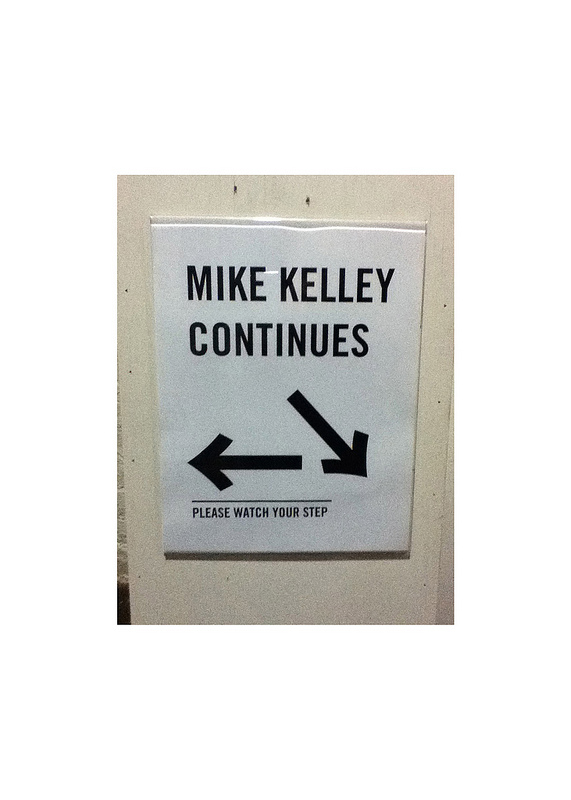
hat tips GucciSoFlosy and "flaming text"
Did these mixes in August and decided not to post for whatever reason. All were put up previously, going back to 2005. Some were drastically shortened (commensurate with their number of musical ideas); others were re-"mastered" as my skills in that area have (only) slightly improved.
"Sacred Elephants (Aug 2013 PSP Mix)" [mp3 moved to Bandcamp]
"Godhopper (Short 2013 Version)" [mp3 moved to Bandcamp]
"Slow Hooterville (Short 2013 Version)" [mp3 moved to Bandcamp]
"Permanent Chase (2013 Mix)" [mp3 further revised and moved to Bandcamp]
"Winged Man" [Vimeo] [Embedded Version]
I recycled the pixel field GIF from "Gridhopper" for this somewhat less multimedia-y video.
Am interested in combining lo-fi computer graphics with "simple waveforms" analog sounds -- it seems right even if there's no theory for it.
The soundtrack is below:
"Winged Man (audio only)" [mp3 removed]

Social Photography III: An Exhibition of Cell Phone Photographs benefits the Tribeca non-profit gallery carriage trade. The press release explains:
Emphasizing no particular theme beyond how the cell phone camera is most often used, both artists and non-artists were invited to submit images from their phones and email them to carriage trade.The images will be produced as 5" x 7" prints, installed in a grid in the gallery exhibition, and offered for sale to help support upcoming programming at carriage trade.
Images are viewable on flickr. It's amusing that after flickr's recent white-space-eliminating redesign, users such as carriage trade are adding white mattes to the photos in order to separate them visually on the page and give them breathing room. See example above, a photo by B. Wurtz, downloaded from flickr as a 800 x 570 pixel jpeg, more than half of which is white space. We're assuming the prints on view and for sale don't include this surplus acreage. But that's a minor issue. I like what the gallery says about cell phone photos:
As cell phone cameras become more ubiquitous, their function continues to evolve. Encompassing the varied roles of snapshots, visual notes, discrete picture taking, or the immediacy of citizen journalism, the cell phone camera lacks the intentionality of a point-and-shoot, resulting in a more direct recording of the “everyday.” Because of the proximity of cell phone images to the spoken word and text-based communication, the pictures are often a kind of visual shorthand to fill the gaps in between.
In this third installment of Social Photography, the increasing sophistication of cell phone camera technology has led to an interest in it as a medium in its own right, raising questions about whether it will become indistinguishable from a camera or maintain some level of informality and idiosyncrasy by virtue of its hybrid nature and function as a tool for communication.
The question of whether the phone is "indistinguishable from a camera" gets at the more vexing question of how, and at what level, to evaluate its output. Photography had an uphill battle for acceptance as a museum-collectible art, and now the ease and ubiquity of phone-imaging challenges the preciousness of photography. carriage trade kicks cell phonery up a notch by "reifying" it, that is, making it physical, handsome, and collectible. So in a sense the exhibition isn't so much raising a question as answering it. The next step toward museum validation is critical discourse, of which this blog post constitutes a tiny part. A further question is whether a star system can ever emerge in such a diffuse field. Who will give us the Mike Kelley stairwell sign for this practice, if it is a practice?
Addendum: Continuity-wise, see earlier post on carriage trade's 2011 benefit. The issue then was removal of a page of exhibition photos by Facebook. Back then Zuck wasn't the well-known unhip evil he is now widely understood to be, among teens and other discriminating internet users.
Addendum 2: I saw the show as installed in the gallery. The white space is indeed part of each print but it works as a kind of matte to isolate the image. So it's not Flickr-specific (was being sort of cheeky-rude with that implication). According to the gallery, the format has been in place for the last three years' benefits. Amusingly, when it started, many printed-out cell phone photos didn't occupy much more than 3 x 4 inches, and the paper prints are 5 x 7. Now with the advent of megapixel-everything, the gallery is having actually to shrink many of the photos to keep the format consistent.